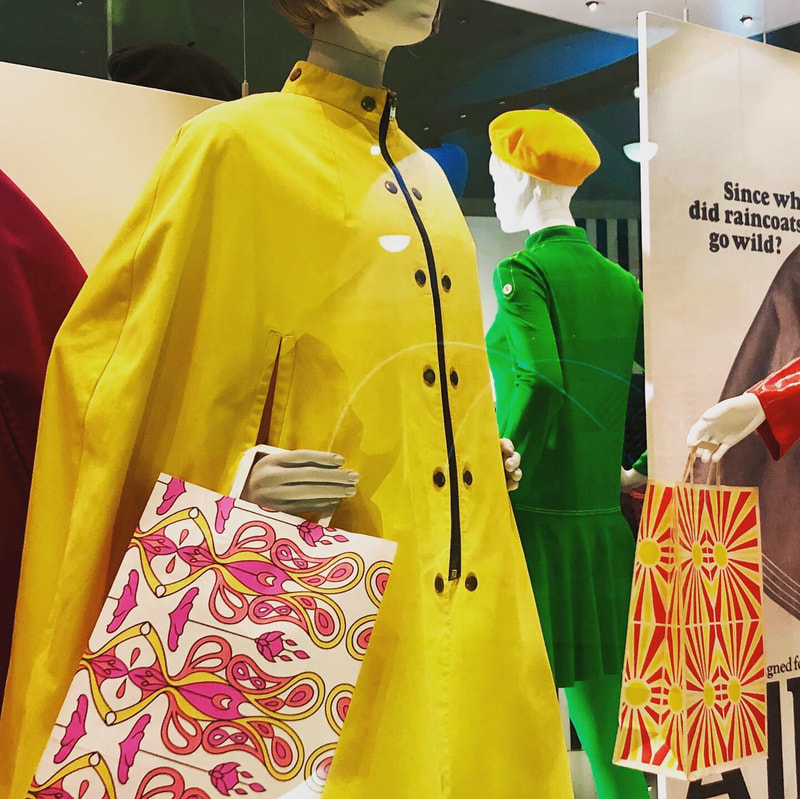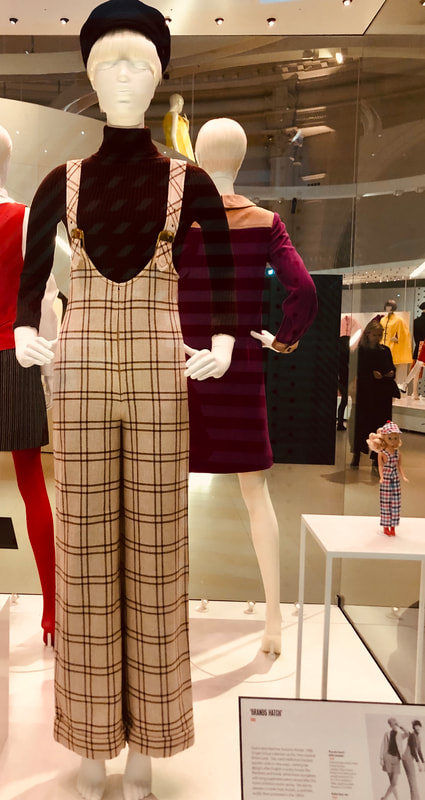|
HOW QUANT MADE THE SIXTIES
By Sara Darling If the Sixties represented the fashion revolution, it was in part led by teenagers who wanted to shake off their parents gloomy past, and reinvent themselves as bright young things with a bright future.. New fabrics, bold prints and shorter hemlines gave a fresh new look to the spending generation, and fashion became more attainable to the masses, which was the first generation to express themselves after the stuffy styles available during WWII. Synonymous with youth culture, one of the most prominent icons of the decade is Mary Quant, who wanted to make clothes she would wear. Partly, the key to her success was making normally exclusive, designer fashion accessible on the high street; By creating short runs of highly desirable clothes, everyone wanted the next release, and her popularity grew phenomenally as she expanded from a small boutique to international label. With London firing on all cylinders, the Sixties was filled with optimism, freedom and hope, and was a melting pot for creatives, so Quant wanted to design clothes that were colourful and experimental. Freed from any rules, this fashion revolution challenged gender rules of women being submissive, and was the beginning of affordable and fun fashion for independent women, in a city where anything and everything was possible The summer exhibition at the V&A is a retrospective of Quant’s work from 1955 and 1975 and highlights how important her social relevance was to the youth during this period. Opening her store, ‘Bazaar’ on King’s Road, just a year after rationing ending, was the beginning of an era for women to express themselves, and not have to dress like their mums. The V&A put out a call for #WeWantQuant last year, asking the British public to lend or donate their Quant garments, and a selection is on display at the heart of the exhibit, along with the accompanying story and photographs of the lenders wearing the pieces. But Quant herself was an icon, and with her five point Vidal Sassoon haircut, she became a tastemaker of a generation. So it was no wonder that she expanded her empire to create makeup, lingerie, bright tights and homewares; Her clothing could be copied with Butterick sewing patterns, and she even inspired the next generation with ‘the best dressed doll in the world’ Daisy Doll. So its no wonder that Brand Quant was the choice of women across nearly three decades, and is still influential today. The upstairs exhibition space at the V&A has been laid out to represent its five petals of Quant's eye catching daisy logo, and visitors can admire everything from PVC macs, to tote bags, hot pants, brightly-coloured shift dresses and her trailblazing pinafore style dress, which summarised an era for young working women. Although Quant became famous for popularising the mini skirt which became the epitome of 1960s fashion and gave women a new kind of femininity and liberation, often her designs were based on or masculine tailoring. The exhibition streamlines her most popular looks, and the playful styles which allowed young women to rebel. This exhibition is a vital reference for anyone interested in history or fashion, as it dictates that Quant was a firm believer in feminism, which has set the scene for today. Visit the exhibition at the V&A from now until 16th February 2020 Book your tickets here
0 Comments
Leave a Reply. |
Sø•sceneA curated catalogue of things to do and see - exhibitions, events, films and galleries.
|









